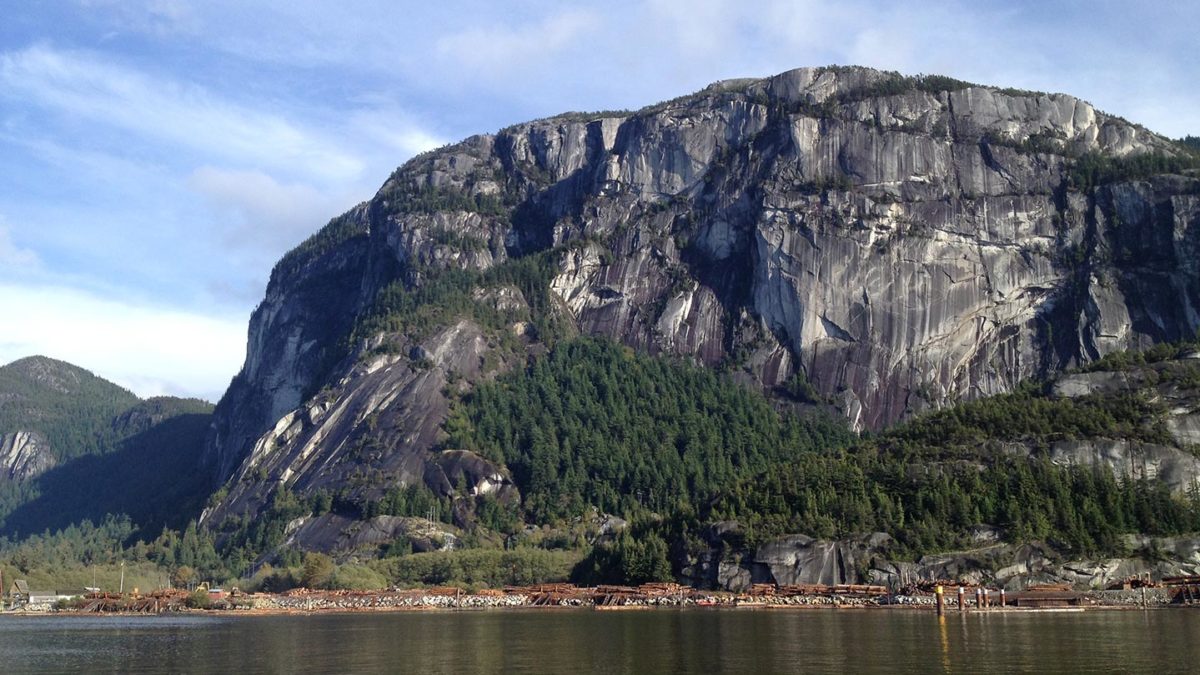Grand Wall in Squamish First Climbed 60 Years Ago Today
Jim Baldwin and Ed Cooper made the first ascent of what would go on to be one of Canada's most classic rock climbs

Sixty years ago today, Jim Baldwin and Ed Cooper completed their first ascent of the Grand Wall on The Chief after around six weeks of effort. The two were among the top big wall and alpine climbers of the time.
The 500-metre climb was at the centre of a lot of media attention, and people would stop on the side of the road to watch the two as they aided up the steep granite. A Squamish blacksmith made most of the bong pitons used on the first ascent. They graded it 5.6 A1, it now goes at 5.11 A0.
You can watch a great film about the climb called In the Shadow of the Chief here. Ed Cooper wrote about the climb in the American Alpine Journal in 1962. Read the full article here, below are a few excerpts.
Five years ago the ascent of the face of the Squamish Chief, previously erroneously referred to as “Goose Rock,” would have been unthinkable, but improving techniques and equipment now made it feasible. The remarkable ascents in Yosemite Valley in recent years encouraged Jim Baldwin, of Prince Rupert, B. C., and me to attempt it. Certainly it was the most bizarre climb we had ever participated in. The Squamish Chief is located only thirty-five miles north of Vancouver, B. C., and cannot fail to attract the attention of anyone who drives below it. Rising 1700 feet in one vertical sweep above Highway 99, it appears incongruous in its setting at the head of beautiful Howe Sound, with glacier-clad Mount Garibaldi in clear view less than ten miles away.
After two weeks, interrupted by some bad weather, we had the first 850 feet of fixed rope in. We found only a few piton cracks into the face, almost all of them being behind flakes of various sizes. Most notable were the pitons placed behind the “Split Pillar.” This 200 foot column could be seen through, and it split further from the wall as pitons were set, causing lower pitons to loosen and in some instances to come out. The “Sword of Damocles” flake, which vibrated like a 200 foot gong, and the “Detached Flake” just below the tree ledge also were interesting.
Several ideas previously used in Yosemite were borrowed. When prussiking, loads were left hanging behind us, like a tail. The difference in comfort is unimaginable, except to those who have tried both. Soft two- inch wide tape stirrups were used for direct aid, rather than metal step stirrups. A combination of two tape stirrups and one step stirrup was found to be ideal, since tape stirrups are difficult to step into in a hurry.
The fifth day, starting from the amazing chockstone at the bottom of the “Roman Chimney,” which seemed to be suspended, I climbed the flaring overhang at the top of the chimney and saw the final 50-foot vertical dièdre which had at all times been hidden from view from below. There were only a few pitons available that fit the crack, and Jim climbed it by removing the lower piton and placing it higher while anchored to the center piton. The last piton came out as Jim chinned on a bush over- hanging the top. At six p.m. we stood together looking down the last 50 feet, the remainder of the route hidden from view. Now, for the first time in a month, we could relax.
Our ascent of the face of the Squamish Chief required some 135 bolts and probably 200 pitons. Many mistakes were made, and perhaps others would have done better. But we made it, after nearly giving it up because of obstacles both on and off the face. No doubt the climb will be repeated, perhaps without the use of fixed ropes. Two days would be reasonable time for a competent party. But the challenge remains—that of a climb where only those who are thoroughly prepared should seriously consider the ascent, and even then, eventual success remains in doubt.


